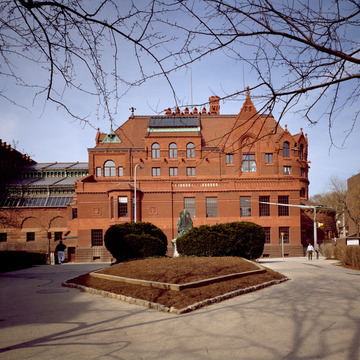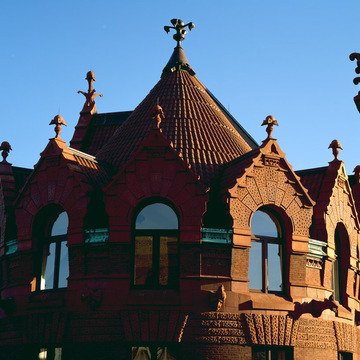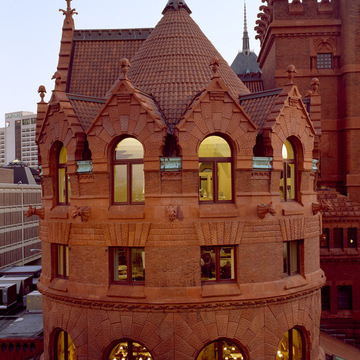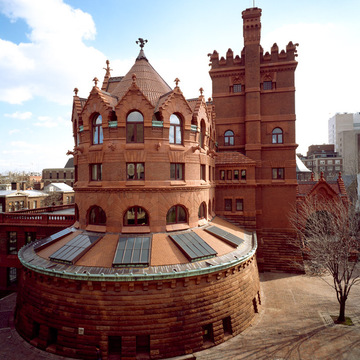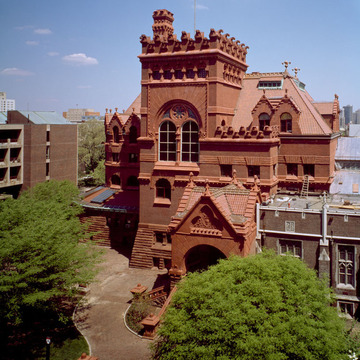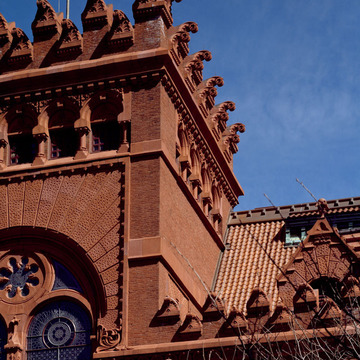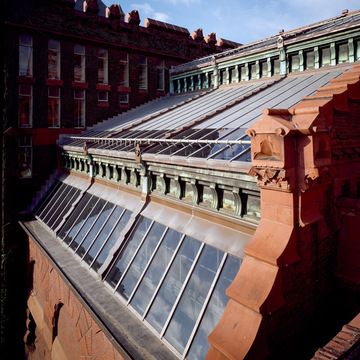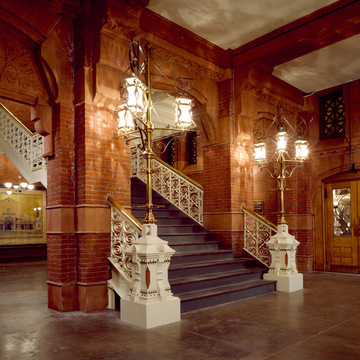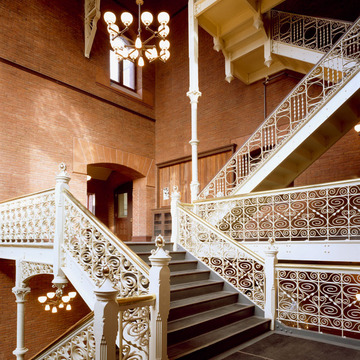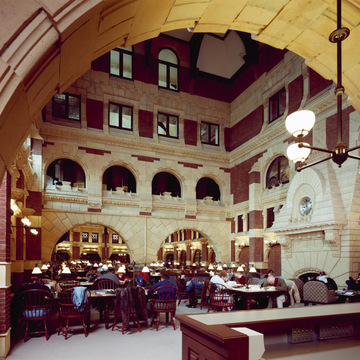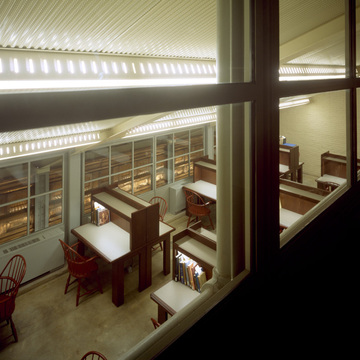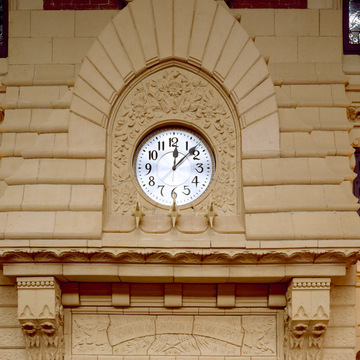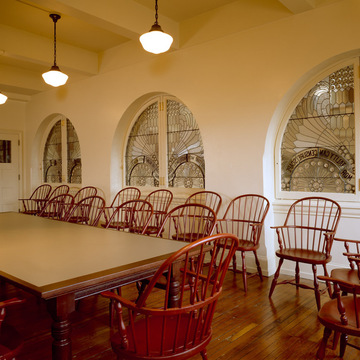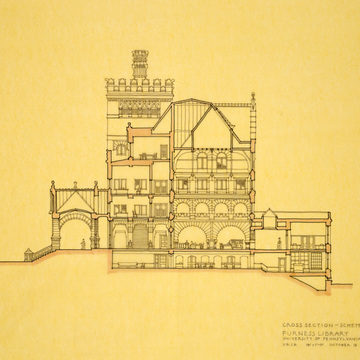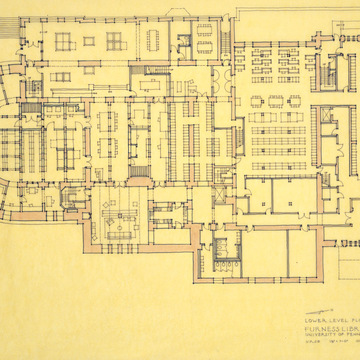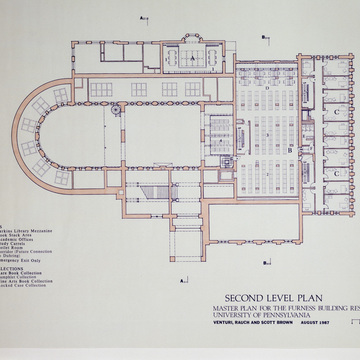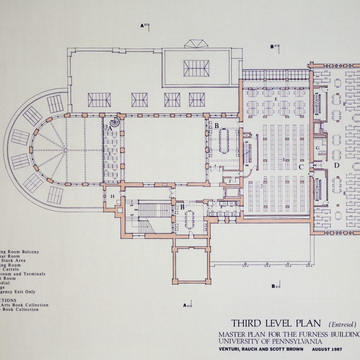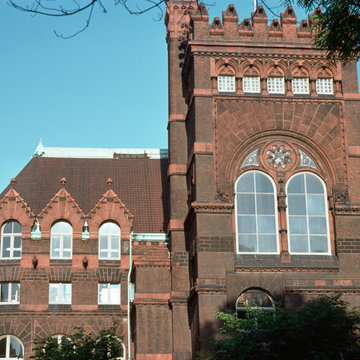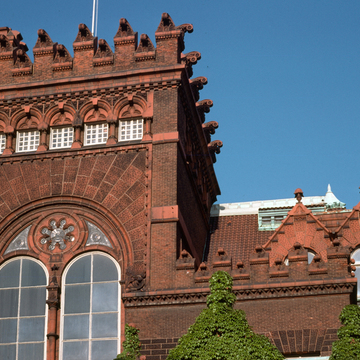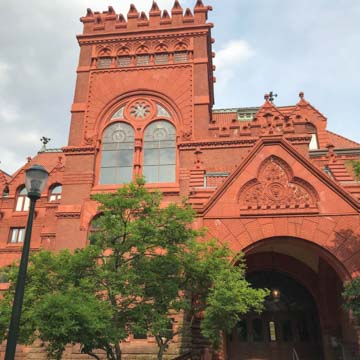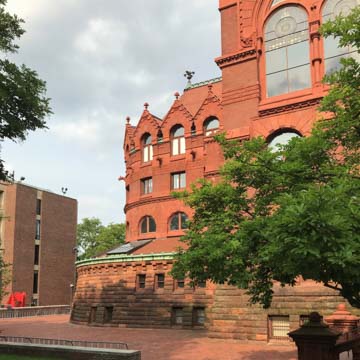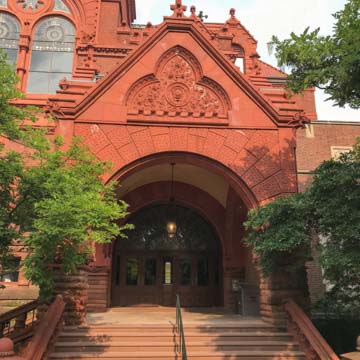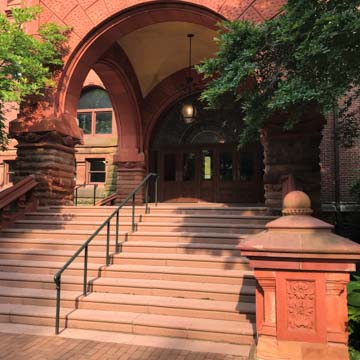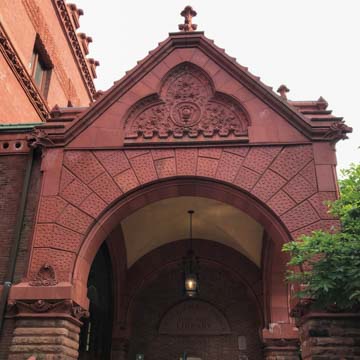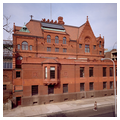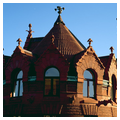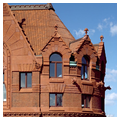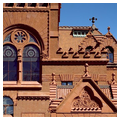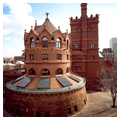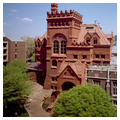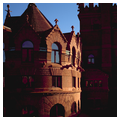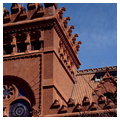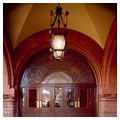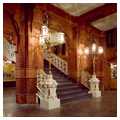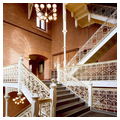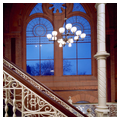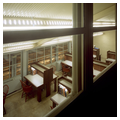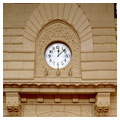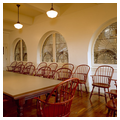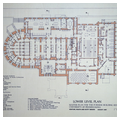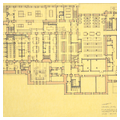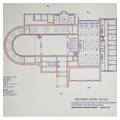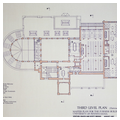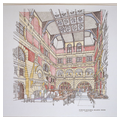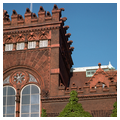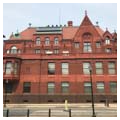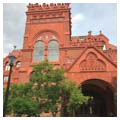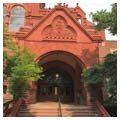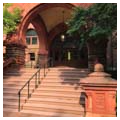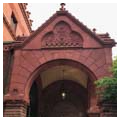You are here
Fisher Fine Arts Library (University Library)
Furness's fiery red brick, terra-cotta, and tile library contrasts violently with the green stone and academic Gothic detail of College Hall (PH147.2), but set the stage for Penn's shift toward the modern sciences during the tenure of Provost William Pepper, M.D. Though the gargoyles and crenellations give the building a vaguely ecclesiastical character, the more important subtext is the underlying industrial culture that informs the building. Philadelphia factory designers typically attached the circulation and secondary functions such as toilets in a separate stair tower, thereby leaving the shop floor open for placement of machinery. Furness followed the same model with a great front tower containing stairs, toilets, and other services.
Inside the stair hall, Furness used the iron of the stair to give a lesson on the different natures of iron—cast, wrought, and rolled—and accented the vestibule with some of the most remarkable leaded glass of its day, anticipating Art Nouveau and early modernism in the masklike panels above the main entrance. The large stair hall was conceived as a “conversation room” with stairs taking those not using the library to other spaces, including an upper-floor lecture hall and the room intended for the University Museum (PH147.8). The library user—admonished to not waste time by the Shakespearean quotation “Talkers Are No Great Doers” (selected by Frank's brother, preeminent Shakespeare scholar Horace Howard Furness)—enters through doors into the main hall. The card catalog in the opposite arcade was the tool that made the collection researchable and led in turn to the adjacent book delivery desk.
The delivery desk, to the south, backs up to the book collection that was stored in a self-supporting storage system designed for expansion—the great problem faced by libraries at the beginning of the modern age. The bookstack was roofed with glass above glass floors to eliminate the need for gas lighting that damaged modern high-acid paper. Shaped like a foundry with a raised central ventilator faced with operable copper louvers for ventilation, the stack was designed to extend six additional bays beyond the original three, permitting the tripling of the collection. Beyond the card catalog was the book cataloging department that faced 34th Street. A quiet reading room to the north and small seminar alcoves around it containing the principal books of the various university departments provided space for scholars to develop and teach the new knowledge that was transforming American higher education.
Two additions by Furness's office deferred to his style with indifferent results, the Duhring Wing (1914–1915) that extended the bookstacks and the Lea Reading Room (1923–1924) to the east. A more refined academic Gothic was used by Robert Rhodes McGoodwin for the Furness Shakespeare Library (1931) to the right of the main entrance; the entire building was to be refaced in this manner but fortunately the Great Depression worsened—how rarely can we write that phrase?—leaving the rest of the exterior to be restored in the 1980s.
The Venturi firm's touch was light, restoring the logic of the plan, inconspicuously incorporating modern services and designing the library furniture, and lighting. In the basement, entered off the stairs to 34th Street, is the Kroiz Gallery of the Architectural Archives that contains the papers and drawings of Louis Kahn and other notable architects. Across 34th Street is the Vagelos Laboratory for the Institute for Advanced Science and Technology (1991–1997), designed by Venturi, Scott Brown and Associates in association with Payette Associates. Its carefully selected color palette complements Furness's library and the adjacent Hayden Hall.
Writing Credits
If SAH Archipedia has been useful to you, please consider supporting it.
SAH Archipedia tells the story of the United States through its buildings, landscapes, and cities. This freely available resource empowers the public with authoritative knowledge that deepens their understanding and appreciation of the built environment. But the Society of Architectural Historians, which created SAH Archipedia with University of Virginia Press, needs your support to maintain the high-caliber research, writing, photography, cartography, editing, design, and programming that make SAH Archipedia a trusted online resource available to all who value the history of place, heritage tourism, and learning.
















